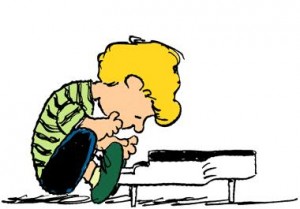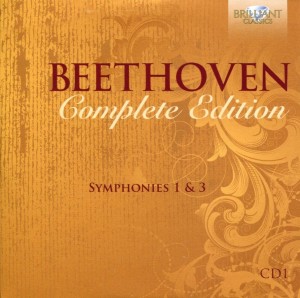 Like yesterday’s CD, today’s offering of Beethoven symphonies (No. 2 and No. 4 this time) are mature, melodic, dynamic, remarkably listenable, and enjoyable from start to finish.
Like yesterday’s CD, today’s offering of Beethoven symphonies (No. 2 and No. 4 this time) are mature, melodic, dynamic, remarkably listenable, and enjoyable from start to finish.
And, like yesterday, I have to admit I had no idea Beethoven was this good.
I’m sure Schroeder (from Peanuts fame) would cluck his tongue at my ignorance regarding his favorite composer.

But I can’t know everything about everything. I mean, come on.
I’m only human.
Beethoven’s symphonies are both dynamic and delicate, with boisterous passages as well as gentle ones. Plus, the choice of instruments and what they play is masterful. I find myself leaning forward to hear every note.
I didn’t do that with Haydn. (Well, maybe once or twice.)
I did it with Mozart. A lot. But rarely with Haydn.
And, so far, I’m doing it with every composition from Beethoven.
According to Wikipedia, “Symphony No. 2 in D major (Op. 36) is a symphony in four movements written by Ludwig van Beethoven between 1801 and 1802. The work is dedicated to Karl Alois, Prince Lichnowsky.” Which means Beethoven was 32 when he finished Symphony No. 2. (And 33 when it premiered.)
From its entry on Wiki:
Beethoven’s Second Symphony was mostly written during Beethoven’s stay at Heiligenstadt in 1802, at which time his deafness was becoming more apparent and he began to realize that it might be incurable. The work was premiered in the Theater an der Wien in Vienna on 5 April 1803, and was conducted by the composer. During that same concert, the Third Piano Concerto and the oratorio Christ on the Mount of Olives were also debuted. It is one of the last works of Beethoven’s so-called “early period”.
For example, Movement III (“Scherzo & Trio: Allegro”) from Symphony No. 2 in D. Op. 36 is particularly captivating. Lots of clever little Continue reading

